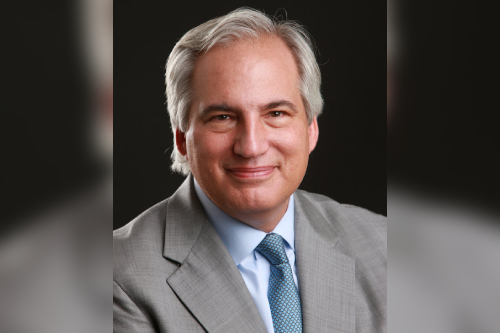Mortgage and real estate professionals need to understand why one office is safer than another

Are pandemic-safe office spaces the only way commercial landlords can survive through, and beyond, the pandemic? Will modern HVAC systems, dispatch elevators, and socially distanced viewings be the route to recovery for a commercial real estate sector hit especially hard during the pandemic? That’s what MPA asked Michael Colacino (pictured), president of commercial real estate tech firm Squarefoot.
Colacino explained some of the bottlenecks to pandemic-safety in offices, why some landlords have struggled, what others have done to make their offices feel safer, and whether those landlords investing in safer offices now are going to be better off in the long-run. He said that mortgage professionals will play a crucial role in assessing the safety of an office space and communicating that to their clients. It’s time for the industry to get educated on what’s a pandemic-safe office, and what’s just performance.
“What really happens is a tenant looks at me and asks, ‘Mike, is it safe?’,” Colacino said. “It’s my job to have all the facts and information internalized in my head and be able to say, ‘yes, it’s safe’.”
Colacino believes the first step to assessing a safe office space is finding a way to see it in person. Unlike residential real estate, which has bounced back on the success of virtual viewings, commercial office space is, in Colacino’s opinion, more of a ‘kick the tire’ business. Recovery for office spaces will require getting new tenants, and being able to show them around the place safely is a hurdle to overcome. People want to reopen and go back to the office, Colacino explained, but they remain concerned about getting in that elevator and seeing the space.
Read More: The surprising players buying JCPenney, Brooks Brothers, and Forever21
That viewing process should also tell you much of what you need to know about the landlord. If they talk through their pandemic-safety measures and any improvements they’re planning to make, it’s a good sign. If, conversely, they’re not taking COVID-19 seriously, Colacino said it will point to poorer pandemic-safety measures.
In our current understanding of the virus as a largely airborne pathogen, Colacino explained that ventilation systems and modern elevators are an office space’s best defences against COVID-19. In the first days of the pandemic, when we thought transmission largely occurred on surfaces, landlords took extra steps to deep-clean their spaces, a less capital-intensive solution than replacing the HVAC or elevator systems.
Ventilation is a particularly sticky issue because a system pulling in more outside air goes against the recent trend of more energy-efficient ventilation systems that use less external air. Older office buildings are often built with better external airflow and can serve as pandemic-safer environments, Colacino said. Air purifiers with HEPA air filters, too, can assist in making an office space more pandemic-safe.
Read more: Multifamily fraud still on the rise - study
Where older buildings, generally, have safer ventilation systems, newer buildings tend to boast elevator systems better equipped for a pandemic. Dispatch elevators, where the destination is inputted on a central panel and you are directed to a particular elevator, are easy to program with a mind for social distancing. Dispatch elevators, Colacino said, are relatively easy to install in older buildings too.
There’s an element of theater to all these measures, too. As with security checks at the airport, the purpose of these measures is to make people feel safe, Colacino explained. It’s crucial for a mortgage professional to note the difference between outright performance, like more frequent deep cleans, and the steps that will ensure people feel safe and are safe.
But will these investments prove decisive for commercial landlords? Colacino accepts that this is the core question much of the commercial real estate industry is facing. At the moment, he says, we don’t know enough about consumer preference and demand to say with certainty that pandemic-safe offices will lead the recovery for office space. At the same time, however, he says the advice a tenant gets from their real estate advisors will be crucial and mortgage professionals must understand why one space is more safe than another and can communicate that to the tenant. We know that, at least for now, health and safety is playing an outsized role in organizational decisions.
“I would bet on investing in these changes to your building, the theory being that it’s going to be longer rather than a shorter consequence. It’s probably the right thing to do,” Colacino said. “It’s probably not going to harm your building’s marketability under any circumstances - it should marginally help rather than hinder it. If I were a landlord, I’d be probably want to be at the upper end of the curve in terms of wanting to spend money to retrofit my buildings for COVID.”



